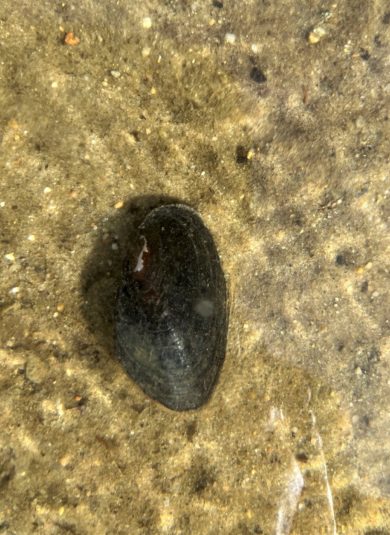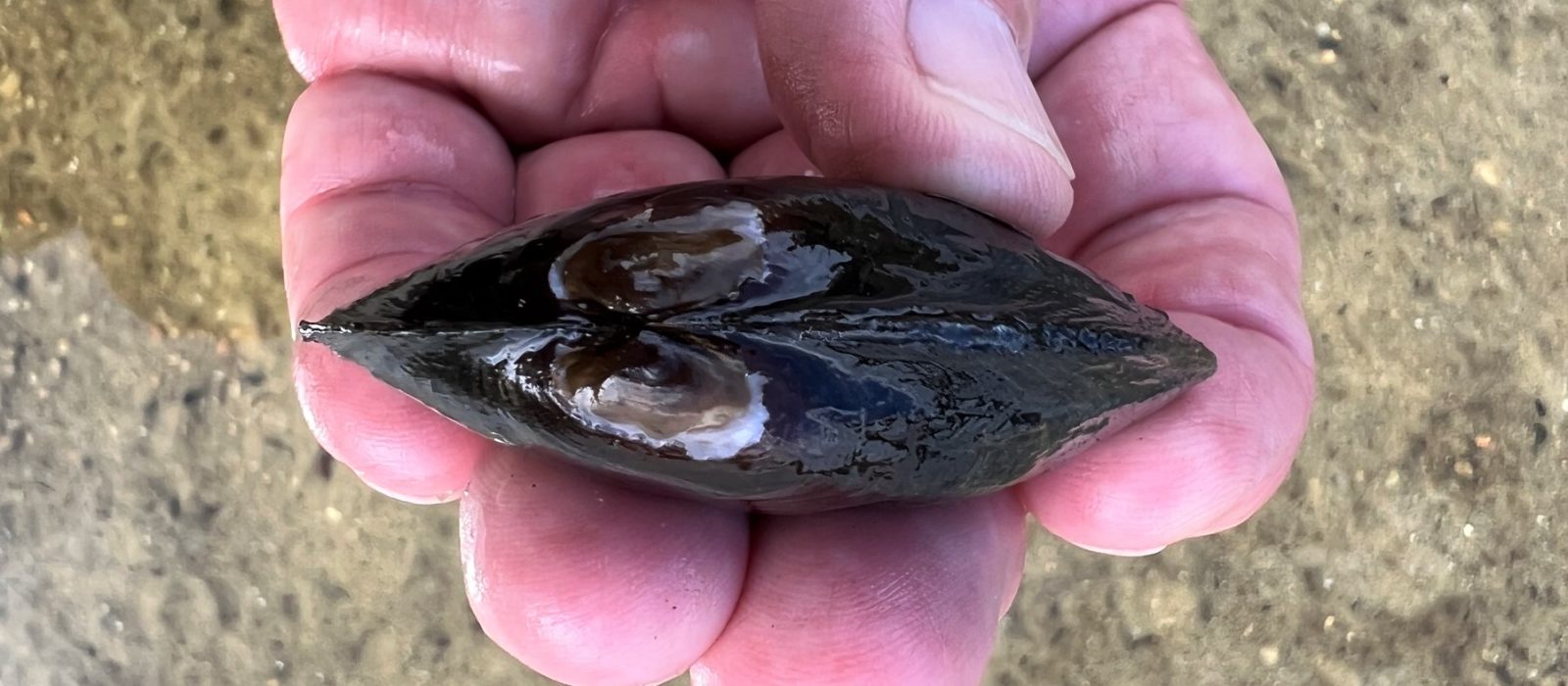Elliptio complanata
Disappointed by our failed search for two plant species known to have grown once on the shores of Seth’s Pond, West Tisbury, but not observed anywhere on Martha’s Vineyard in the past several decades, Margaret Curtin and I consoled ourselves with photographing a mussel we spotted in shallow water there. I posted the photos to the iNaturalist Martha’s Vineyard Atlas of Life project. But, clueless about mussel taxonomy, I didn’t have a scientific name to propose. I posted the observation as “freshwater mussel,” hoping some other iNaturalist user would be able to identify it.
Within a short time, the prolific iNat identifier “peakaytea” weighed in with “Bivalvia,” which, if less specific than “freshwater mussel,” was at least an accepted scientific name. That name quickly attracted the attention of two off-Island bivalve aficionados who identified the mussel as Elliptio complanata (Eastern Elliptio). All within 24 hours – an impressive illustration of how iNaturalist can bring expert knowledge to where it’s needed.

Elliptio complanata in Seth’s Pond, West Tisbury
Elliptio complanata is in the group of mussels with shells that include a layer of “mother of pearl.” A related species supplied the raw material to make billions of buttons from Mississippi River mussels in the late 19th and early 20th centuries. The industry collapsed in the mid-20th century, undone by depletion of the Mississippi’s formerly vast mussel populations as well as by competition from plastic buttons and zippers.
“Which came first, the mussel or the fish?” Elliptio complanata, like freshwater mussels generally, depends on fish for reproduction: their larvae are gill parasites. How a mollusk with this life history ended up in a landlocked, groundwater pond amid the glacial till of the Vineyard’s moraine is an interesting question. One might speculate that Seth’s Pond has freshwater mussels because someone stocked it with fish parasitized by mussel larvae. An alternative version might have the mussel larvae introduced by an osprey forced to drop its fish into the pond by other birds trying to steal its meal. In any case, I’m betting the fish came first.
Freshwater mussels are in trouble. Elliptio complanata is abundant, widespread, and better able than most mussels to tolerate habitat degradation. But freshwater mussels on the whole are “the most endangered group of organisms in the United States,” according to the Center for Biological Diversity,
Freshwater mussels served as food for indigenous peoples, but they’re no longer considered safe to eat. Able to accumulate toxins over a life span of filter-feeding measured in decades, they’re not recommended for human consumption.
Freshwater bivalves were left out of the 2008 book Island Life because of an absence of data. Our Elliptio complanata is the first iNaturalist observation of a freshwater mussel on MV. Are they rare here, or just overlooked? Do other, related species also occur in Seth’s Pond or some other Vineyard pond or stream? Clearly, there’s a need for freshwater mollusk finders! As our experience shows, no expertise is needed.
A retired medical doctor, Greg Palermo has been a Polly Hill Arboretum Research Associate since 2014 and is a member of the Martha’s Vineyard Floristic Study Group, a team of Island naturalists contributing to an updated Flora of Martha’s Vineyard.
